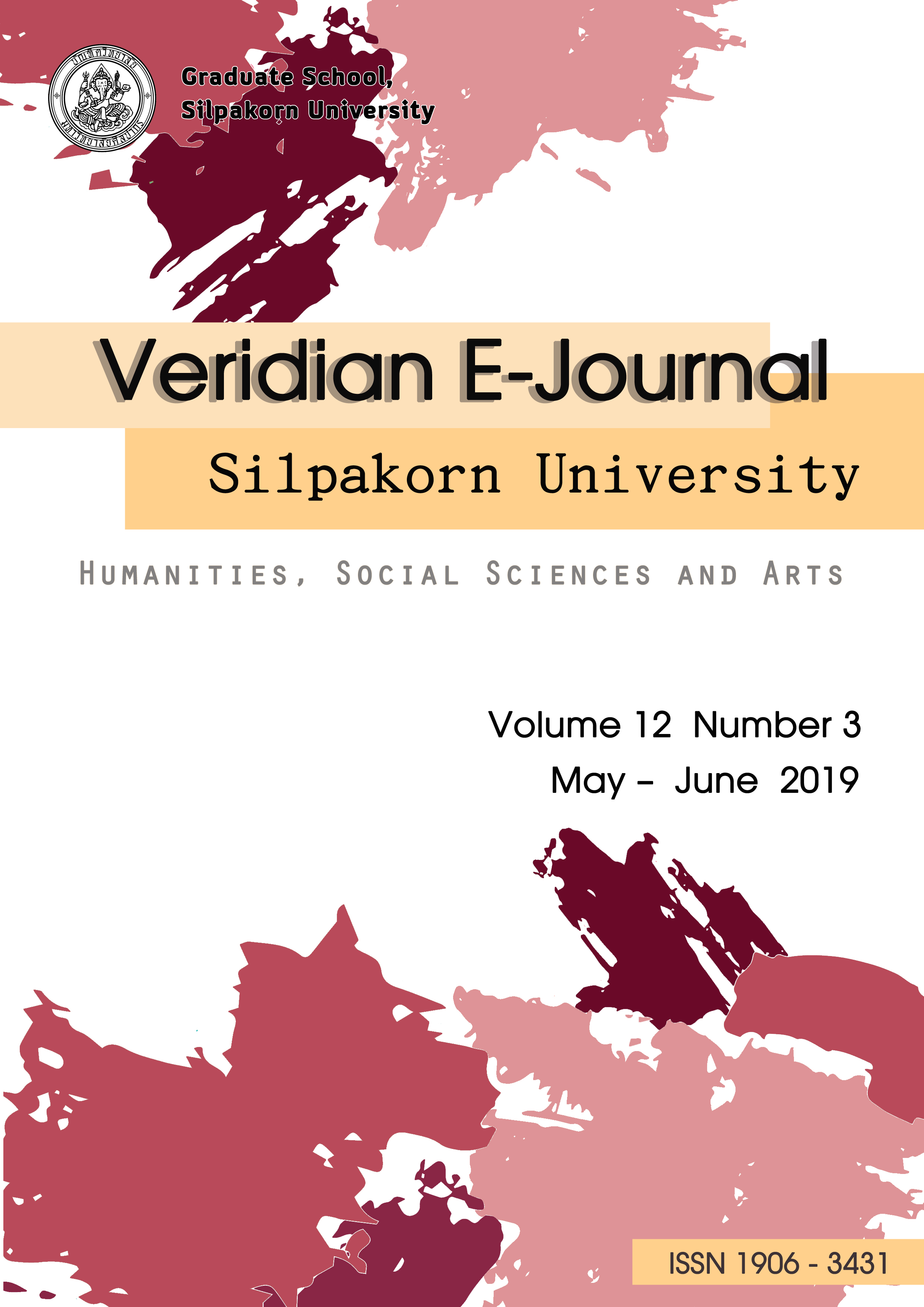การระบุตัวบ่งชี้สำหรับกรอบการประเมินการจัดการท่องเที่ยวเชิงนิเวศอย่างยั่งยืน ในเขตลุ่มแม่น้ำบางปะกง (Indicator For The Assessment Framework Sustainable Ecotourism Management Along Bangpakong River)
Main Article Content
Abstract
การวิจัยนี้มีวัตถุประสงค์เพื่อระบุชุดของหลักการ เกณฑ์ ตัวบ่งชี้ และตัวตรวจสอบ สำหรับกรอบการประเมินการจัดการท่องเที่ยวเชิงนิเวศอย่างยั่งยืนในเขตลุ่มแม่น้ำบางปะกง วิธีดำเนินการใช้การสัมภาษณ์เชิงลึกกับกลุ่มตัวอย่างที่เป็นผู้มีส่วนได้ส่วนเสียที่เกี่ยวข้องกับการท่องเที่ยวในเขตลุ่มแม่น้ำบางปะกง ด้วยการเลือกแบบเจาะจง จำนวน 5 คน เครื่องมือที่ใช้เป็นแบบสัมภาษณ์ เชิงลึกปลายเปิดแบบกึ่งโครงสร้าง ผลการวิจัยปรากฏว่า กรอบการประเมินการจัดการท่องเที่ยวเชิงนิเวศอย่างยั่งยืนในเขตลุ่มแม่น้ำบางปะกง ประกอบด้วยชุดข้อมูล 8 หลักการ ได้แก่ 1) หลักการด้านนิเวศวิทยา 2) หลักการด้านสิ่งแวดล้อม 3) หลักการด้านเศรษฐกิจ 4) หลักการด้านการเมือง 5) หลักการด้านความร่วมมือระหว่างสถาบัน 6) หลักการด้านการจัดการและบริการ 7) หลักการด้านการอนุรักษ์วัฒนธรรม และ8) หลักการด้านความร่วมมือทางสังคม ประกอบด้วย 16 เกณฑ์ 59 ตัวบ่งชี้ และ 170 ตัวตรวจสอบ สามารถนำไปใช้ประเมินจัดการท่องเที่ยวเชิงนิเวศในเขตลุ่มแม่น้ำบางปะกงได้
The objectives of this research was to identified the set of principles, criteria, indicators, and verifier for the assessment framework sustainable ecotourism management along bangpakong river using the in-depth interview. The sample were five stakeholders involving tourism of along bangpakong river. The sample was selected by purposive sampling. A semi-structured in-depth interview was used to collect data. The research result was found that the assessment framework sustainable ecotourism management along bangpakong river has eight principles namely 1) Ecology 2) Environment 3) Economy 4) Politics 5) Cooperation of institutions 6). Management and services 7) Cultural conservation and 8) Social cooperation. Overall 16 criteria, 59 indicators, and 170 verifiers can be used in assessing the ecotourism management along bangpakong river.
